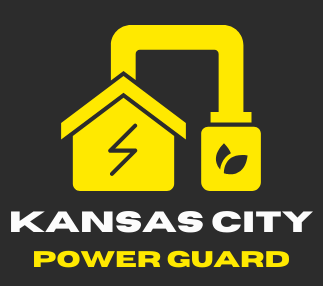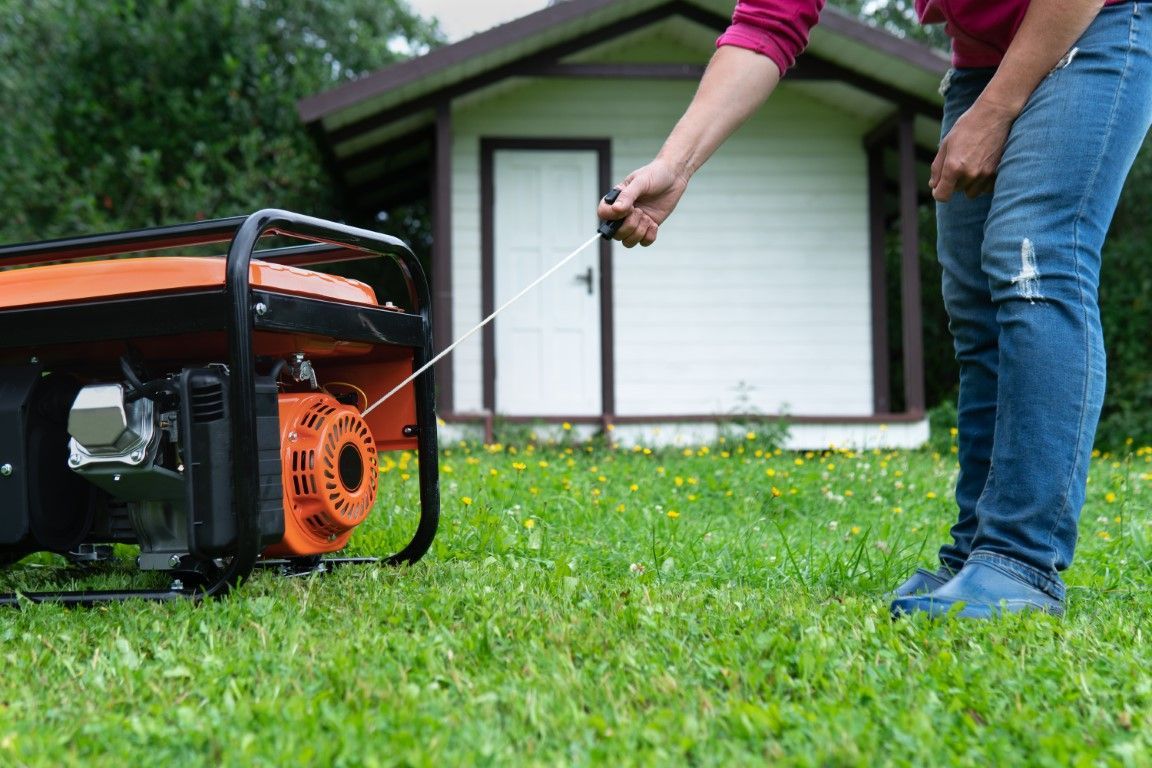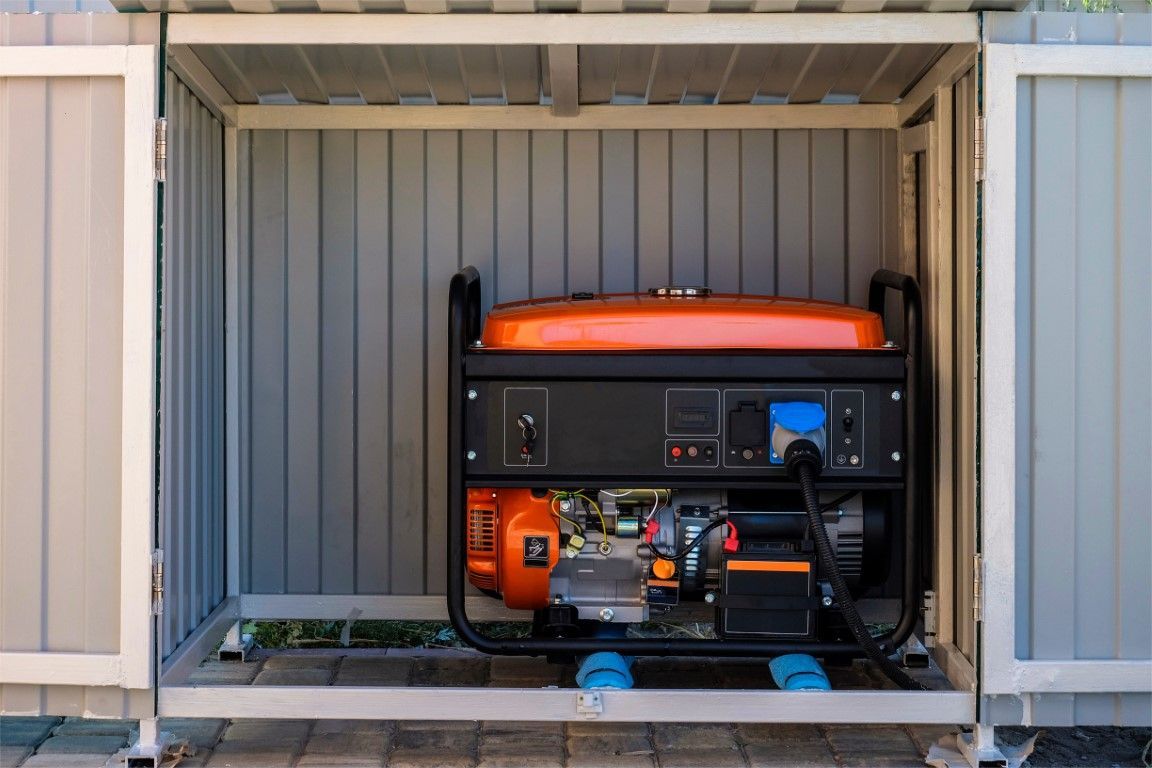
Electric Generators in Kansas City MO
An electric generator is a machine designed to convert mechanical energy into electrical energy. It does this through a process called electromagnetic induction, where the movement of a conductor within a magnetic field produces an electric current. Essentially, it takes power from an external source—like an engine or turbine—and transforms it into usable electricity.
The main function of an electric generator is to provide an alternative source of electricity when the primary power supply is unavailable, unreliable, or insufficient. This is especially important in situations where continuous power is essential. Generators are widely used in various settings, from residential homes and businesses to industrial sites and outdoor events. Their purpose is to ensure that essential electrical devices and systems can operate without interruption, regardless of the status of the main power grid.
Types and Applications
Electric generators come in several types, each designed for specific needs and applications:
- Portable Generators: These are small, movable units that can be used in a variety of situations, such as during outdoor activities, camping trips, or as a backup power source during home outages. They are valued for their flexibility and ease of transport.
- Standby Generators: These generators are installed permanently at a location and automatically turn on when the main power supply fails. They are often used in homes and businesses to provide seamless backup power. They offer a reliable solution for uninterrupted power but require a professional installation.
- Inverter Generators: Known for their ability to produce clean and stable power, inverter generators are ideal for sensitive electronics. They are often used in recreational vehicles (RVs) and for backup power where high-quality electricity is required.
- Industrial Generators:
These are large, high-capacity generators designed for heavy-duty applications. They are used in factories, large construction sites, and other industrial settings where significant power is needed for machinery and equipment.

We will get back to you as soon as possible.
Please try again later.
Each type of generator has its own set of advantages and is suited to different applications, making it important to choose the right type based on specific power needs and usage scenarios.
Safety and Regulatory Considerations
When using a generator, it's crucial to prioritize safety and adhere to regulatory guidelines. This involves ensuring proper ventilation to prevent carbon monoxide buildup, installing CO detectors for early warning, and maintaining fire safety by keeping extinguishers on hand and placing the generator away from flammable materials. Additionally, grounding and bonding are essential for electrical safety, along with overcurrent protection to prevent electrical hazards. Finally, compliance with local building codes and environmental regulations is necessary to ensure safe and lawful generator operation.

Proper Ventilation
To prevent the dangerous buildup of carbon monoxide (CO), make sure your generator is placed in a well-ventilated area. Carbon monoxide is a colorless, odorless gas that can be harmful or even deadly if it accumulates in enclosed or poorly ventilated spaces. Always operate the generator outdoors and away from windows, doors, and vents to allow fresh air to circulate and disperse exhaust gases.
Installing CO Detectors

These detectors can alert you if there are dangerous levels of CO in the air, giving you time to take action before it becomes a serious health risk. Place CO detectors in key areas, such as near sleeping areas and where the generator is used. Regularly check and maintain these detectors, and replace the batteries as needed to ensure they are always functional.
Fire Extinguishers and Suppression Systems
Having fire extinguishers readily available is essential for safety. Choose extinguishers that are suitable for electrical fires, typically classified as Class C extinguishers. In high-risk areas, consider installing a fire suppression system that can automatically detect and extinguish fires before they spread. This adds an extra layer of protection and helps manage fire risks effectively.
Safe Placement Away from Flammable Materials
Position your generator away from any materials that could easily catch fire, such as gasoline, paper, and wood. Keeping the area around the generator clear of debris and flammable substances helps reduce the risk of accidental fires. Ensure that the generator is set up on a stable, non-flammable surface to further minimize fire hazards.
Grounding and Bonding
Grounding involves connecting the generator to the earth to prevent electrical shocks and ensure safe operation. Bonding involves connecting all metal parts of the generator to a common ground to prevent electrical faults. Follow the manufacturer’s instructions for these procedures, or have a qualified electrician handle the setup to ensure everything is done correctly.
Overcurrent Protection
To protect your generator and connected devices from electrical damage, use circuit breakers or fuses. These safety devices help prevent overcurrent situations, where too much electricity flows through the system, potentially causing overheating or fires. Regularly check these protective devices to make sure they are in good working condition and replace any that are damaged or worn out.
Compliance with Local Regulations
- Building Codes and Permits: When installing a generator, it’s important to follow local building codes and obtain any necessary permits. These regulations ensure that your installation meets safety standards and is compliant with local laws. Check with your local authorities or a professional installer to understand the specific requirements for your area.
- Environmental Regulations: Adhering to environmental regulations is essential for minimizing the impact of your generator on the environment. This includes following rules related to emissions and noise levels. Ensure that your generator meets any local standards for emissions and operates within permissible noise limits to avoid disturbing your neighbors and complying with environmental guidelines.
Essential Guide to Overcurrent Protection: Circuit Breakers vs. Fuses
Overcurrent protection is crucial for safeguarding your electrical system and connected devices from potential damage caused by excess electrical flow. Here’s a look at how circuit breakers and fuses play a key role in this protection:
Circuit breakers are devices designed to automatically interrupt the flow of electricity when the current exceeds a safe level. They act as a safeguard by breaking the electrical circuit if there is an overload or short circuit. Here’s how they work:
- Function: Circuit breakers detect abnormal increases in electrical current. When an overload or short circuit occurs, the breaker trips, cutting off the electrical flow to prevent damage to wiring, appliances, or the generator itself.
- Types: There are several types of circuit breakers, including standard, GFCI (Ground Fault Circuit Interrupter), and AFCI (Arc Fault Circuit Interrupter). Each type is designed to address specific issues, such as ground faults or electrical arcs, enhancing overall safety.
- Advantages: Circuit breakers can be reset after tripping, making them convenient for repeated use. They provide reliable protection and can handle high currents, making them suitable for a range of applications.
Fuses are another form of overcurrent protection, functioning as a simple and effective means of preventing electrical damage.
- Function: A fuse contains a metal wire or strip that melts when the current flowing through it exceeds its rating. Once the fuse melts, it breaks the circuit and stops the flow of electricity, protecting the rest of the system from damage.
- Types: Fuses come in various types, including glass tube fuses, ceramic fuses, and automotive uses. Each type is suited to different applications based on its design and current rating.
- Advantages: Fuses are straightforward and inexpensive, making them a popular choice for many applications. They provide effective protection by disconnecting the circuit during an overload. However, unlike circuit breakers, fuses must be replaced after they blow.
When selecting between circuit breakers and fuses for overcurrent protection, consider the following factors:
- Current Rating: Ensure that the breaker or fuse you choose matches the current rating of your system. Using a breaker or fuse with an incorrect rating can either result in inadequate protection or frequent tripping.
- Application: For applications requiring frequent resets or higher current handling, circuit breakers might be more suitable. For simpler setups or specific requirements, fuses may be the preferred option.
- Maintenance: Circuit breakers typically require less maintenance since they can be reset. Fuses, on the other hand, need to be replaced once they blow, which requires periodic checks.
Before we leave your property, we provide comprehensive training on how to operate and maintain your standby generator. We want to ensure that you feel confident in using your generator and that you know how to troubleshoot any issues that may arise. Additionally, we offer ongoing support and maintenance services to keep your generator running smoothly for years to come.
Incorporating overcurrent protection into your electrical system is essential for preventing damage and ensuring safety. Whether you choose circuit breakers or fuses, understanding their roles and proper use can help maintain a safe and reliable electrical environment. Regular maintenance and appropriate selection based on your system’s needs will provide ongoing protection and peace of mind.
Let's Connect!
We offer expert services in standby whole-house generators, ensuring your home stays powered during outages. Our team provides professional installation, maintenance, and support, delivering peace of mind to homeowners. Hire us today for reliable backup power solutions tailored to your needs.
